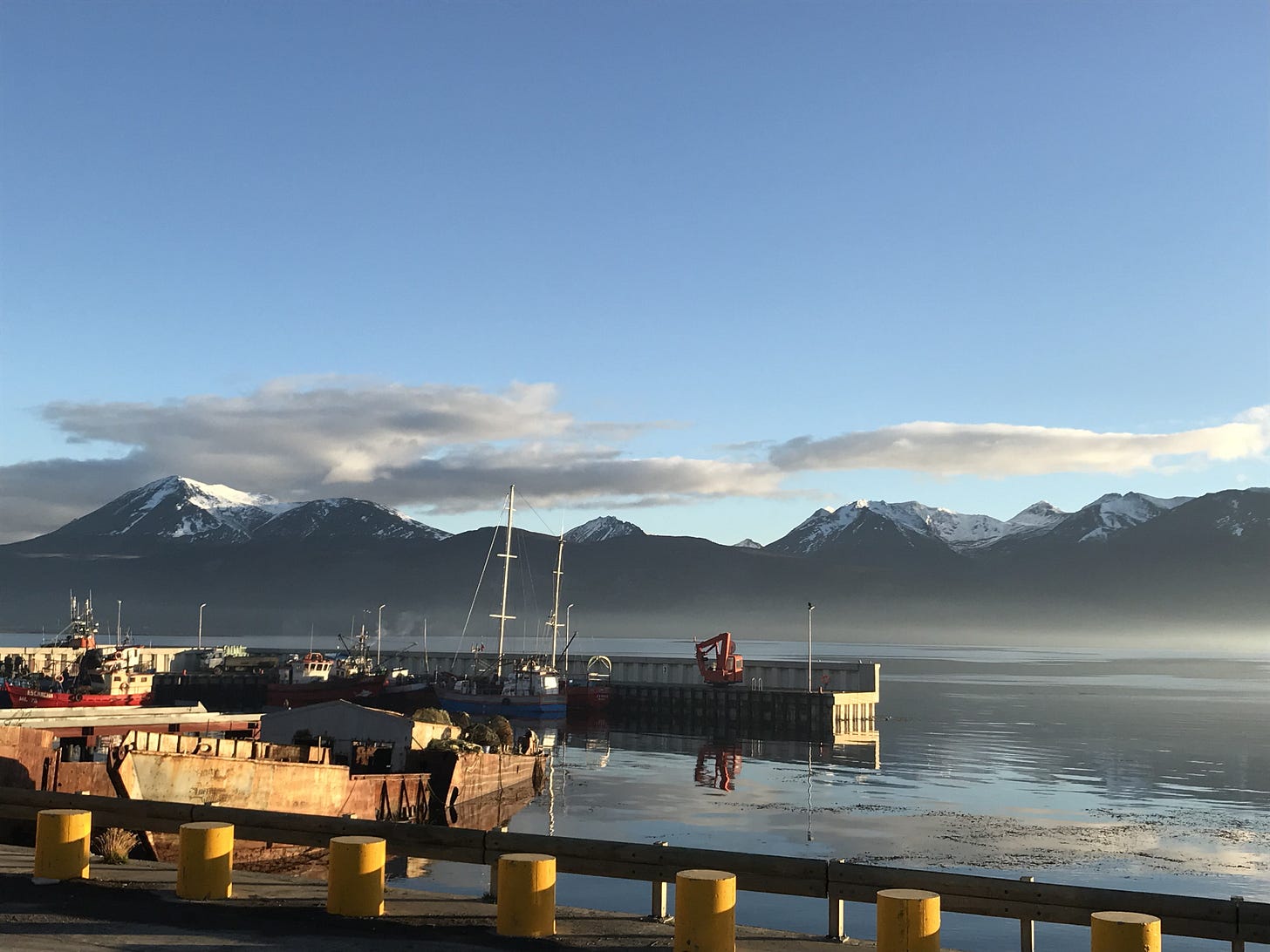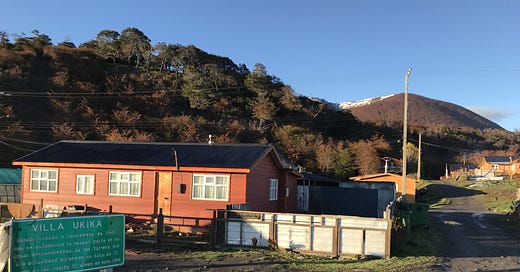Stranded in Chilean Tierra del Fuego, Part 4
How I finally got to visit Villa Ukika, a Yahgan community
[Catch up on this series by reading Part 1, Part 2, and Part 3!]
One of the main reasons I wanted to go to Isla Navarino, on the Chilean side of the Beagle Channel, is that it has a community, known as Villa Ukika, where most of the remaining Yahgan are congregated. This little village has become the hub of a people group that used to roam all throughout the islands of Tierra del Fuego.
Even though I was unsure of what I’d find, I really wanted to visit.
My plan had been to stay (for the one night I thought I was staying on the island) at a hostel in Ukika, but then I made new friends who invited me to stay with them—so it wasn’t until my second day on Isla Navarino that I made my way over there, taking a break from scanning the research treasure trove I’d found.

Villa Ukika is 2 kilometers (1.25 miles) east of Puerto Williams, about a ten-minute walk from Denis and Perla’s house, where I stayed my first night. I followed the road that bordered the Beagle Channel—the one road east out of town—noticing weathered fishing boats and an industrial pier. By this point I understood enough about the political situation between Chile and Argentina that I knew better than to try to hire one of those boats to sneak me across, back to Argentina.
But the other side of the channel seemed close enough to swim across. I debated whether that would be an easier route back to Ushuaia than the multiple days of travel it would take me to go by ferry and bus through Punta Arenas (if I were a stronger swimmer…and if I were more of a risk-taker…and if I didn’t have an iPad loaded with files that were valuable to my research…).
As I walked, I pondered the significance of pointedly establishing the indigenous village on the outskirts of town. Was the spot chosen by the residents for their own sake, or did the government impose the distance as a way to hide the residents from view?

The region where I grew up in Chile had a marked contrast between the majority, Spanish-speaking culture of the city and the indigenous residents of the countryside. My parents were linguists who worked with the indigenous Mapuche on literacy programs, and we lived on the far reaches of gravel roads. We could walk from our home to visit our indigenous neighbors, but my brother and I attended school in the city. We crossed the cultural divide every morning and afternoon on our half-hour drive.
When I was in kindergarten, my parents organized a field trip for my classmates. It was clearly the first time any of the other kids or my teachers or the chaperones had ever been in a Mapuche home, and it was likely the first time any of them had ever knowingly met or spoken with a Mapuche person.
Such is the divide and the prejudice in a lot of Latin America. The legacy of Spanish colonial rule (which strictly enforced a caste distinction between Europeans, those of mixed descent, and the native inhabitants) means Europeanness is still prized. People from the upper classes tend to be paler, while everyone tries to cover up or minimize “inferior” indigenous heritage or physical traits like darker brown skin or a darker hair color.
So I assumed that same prejudice was at least somewhat of a factor contributing to the location of Villa Ukika, separated from the main part of town.
Keep reading with a 7-day free trial
Subscribe to Writing Fireland to keep reading this post and get 7 days of free access to the full post archives.



